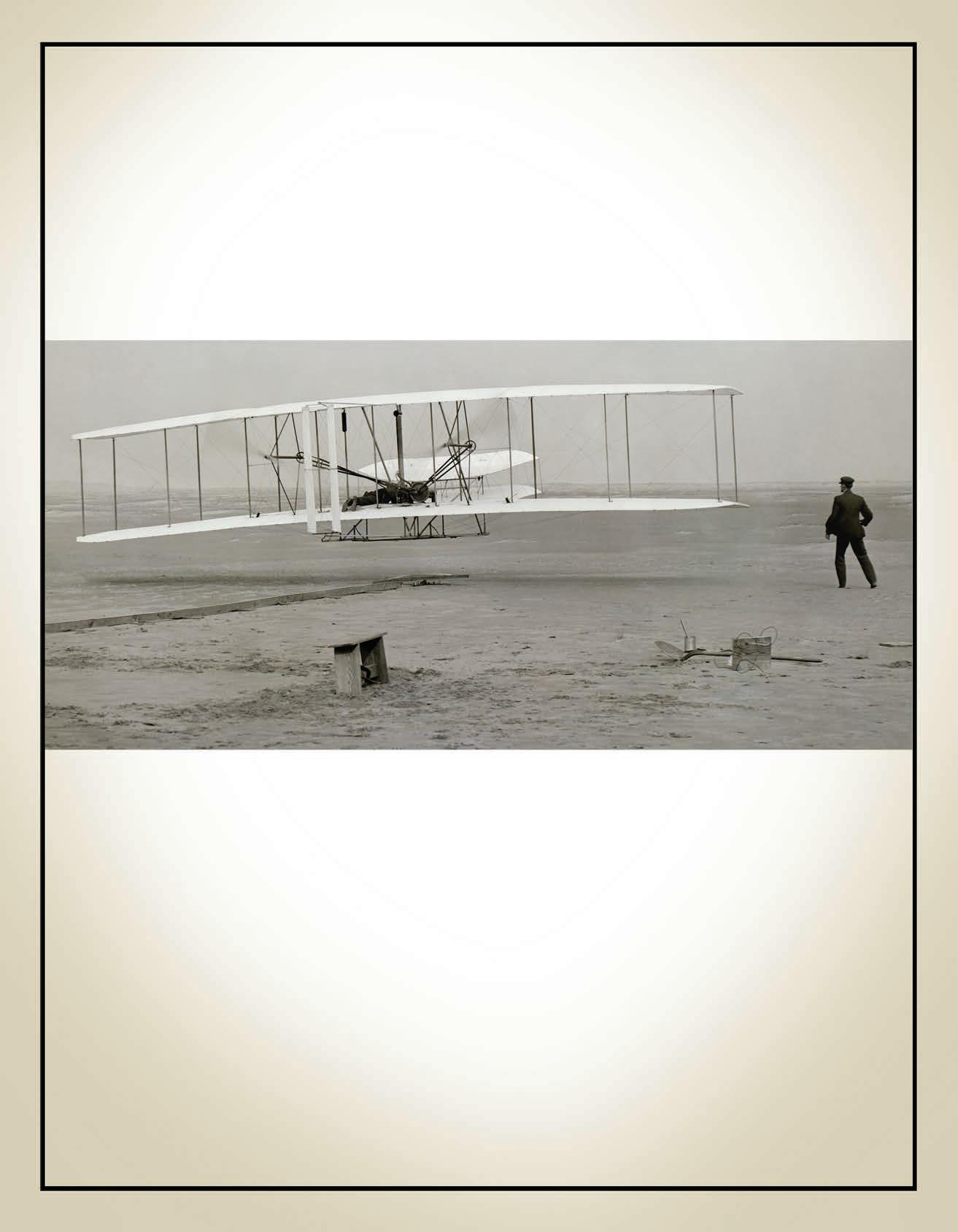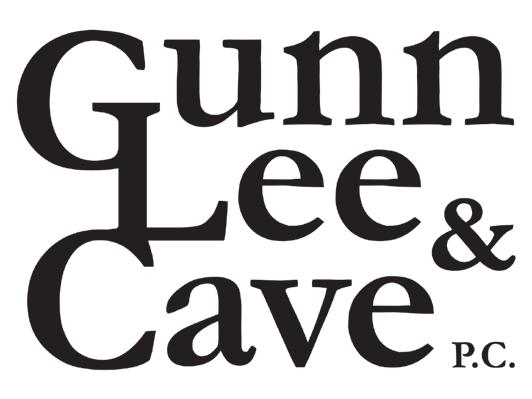
Member Benefit Provider
Trusted by 50,000 law firms, LawPay is a simple, secure solution that allows you to easily accept credit and eCheck payments online, in person, or through your favorite practice management tools.








Member Benefit Provider
Trusted by 50,000 law firms, LawPay is a simple, secure solution that allows you to easily accept credit and eCheck payments online, in person, or through your favorite practice management tools.






SA Bar members save on marketing, grow their client base, and streamline their intake procedures.
Your SA Bar experience, now in the palm of your hand! With MySABar mobile app, you can search directories, register for events and connect with members and vendors—all from your phone.
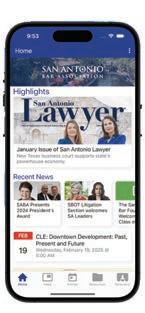

Enjoy your courtesy copy of San Antonio Lawyer® . Strengthen your connection to your professional community and join us!
The San Antonio Bar Association (SA Bar) is where San Antonio legal professionals belong and are valued. SA Bar members hold the key to professional development and profitable business growth. If you’ve let your membership lapse—we miss you! If you are new to San Antonio, we invite you to join the most collegial bar association in Texas!
Cited by members as the #1 resource, the Member Directory, Vendor Directory and Court & Government Directory are now accessible online and on the mobile app. “Click to call” provides instant access!
SA Bar members are the first to receive this type of information.
Available on your mobile device through the Apple App Store or Google Play Store, the MySABar app keeps members more connected than ever. Enjoy direct access to colleagues, events, resources and the SA Bar community in one seamless platform.
Watch our 30-second tutorials to see how easy it is to navigate MySABar and start using today!
SA Bar Member Center
Need to scan or make a copy?
Need a quiet spot to draft an email? Want to join a friend for a coffee? Your Member Center has these and many other benefits! Continuing Legal Education (CLE)
Access convenient, affordable CLE and networking. Grow your network through numerous social mixers and celebratory events throughout the year.
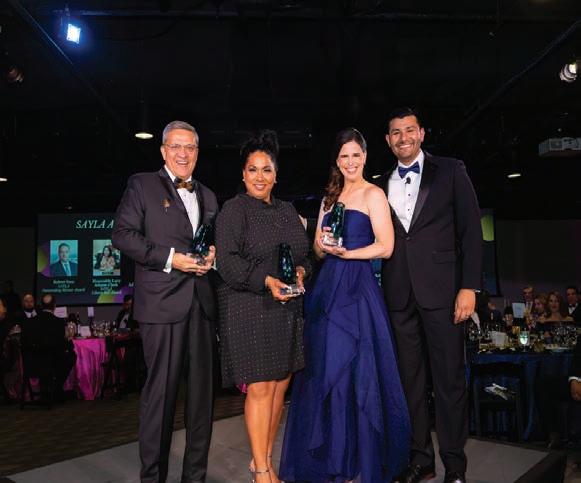
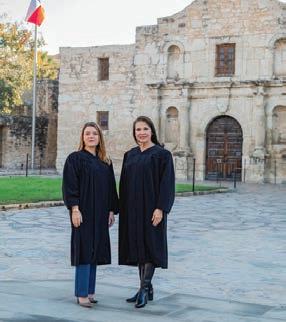



“His
“One
“Lots
“Works





San Antonio Lawyer® is published bimonthly. Copyright ©2025 San Antonio Bar Association. All rights reserved. Republication of San Antonio Lawyer content, in whole or in part, is prohibited without the express written permission of the San Antonio Bar Association. Please contact Editor in Chief Sara Murray regarding republication permission.
Views expressed in San Antonio Lawyer are those of the authors and do not necessarily reflect the views of the San Antonio Bar Association. Publication of an advertisement does not imply endorsement of any product or service. San Antonio Lawyer, the San Antonio Bar Association, and the Publisher reserve the right to edit all materials and assume no responsibility for accuracy, errors, or omissions. San Antonio Lawyer and the Publisher do not knowingly accept false or misleading advertisements or editorials, and do not assume any responsibility should such advertising or editorials appear.
Contributions to San Antonio Lawyer are welcome, but the right is reserved to select materials to be published. Please send all correspondence to info@sabar.org
Advertising Inquiries:
Monarch Media & Consulting, Inc.
Archives of San Antonio Lawyer are available at sabar.org. Send address changes to the San Antonio Bar Association.
Chellie Thompson 512.293.9277 chellie@monarchmediainc.com
Publication Design and Production: Monarch Media & Consulting, Inc.
Editor in Chief Sara Murray
Articles Editor Natalie Wilson
Departments Editor Leslie Sara Hyman
Editor in Chief Emerita
Hon. Barbara Nellermoe
Monarch Media & Consulting, Inc. 512.293.9277 | monarchmediainc.com
Design Direction Andrea Exter Design Sabrina Blackwell
Advertising Sales Chellie Thompson
Sara Murray, Chair
Pat H. Autry, Vice-Chair
Barry Beer
Amy E. Bitter
Paul T. Curl
Michael Curry
Shannon Greenan
Stephen H. Gordon
Leslie Sara Hyman
Lauren Miller
Curt Moy
Hon. Barbara Nellermoe
Steve Peirce
Regina Stone-Harris
ileta! Sumner
Natalie Wilson
Ex Officio
Patricia “Patty” Rouse Vargas
For advertising information, contact:
Chellie Thompson, Monarch Media & Consulting, Inc. chellie@monarchmediainc.com
President
Patrica “Patty”
Rouse Vargas
President-Elect
Nick Guinn
Treasurer
Jaime Vasquez
Secretary
Emma Cano
Immediate Past President
Steve Chiscano
126 E. Nueva, 3rd Floor, San Antonio, Texas 78204 210.227.8822 | sabar.org
Directors (2023-2025)
Kacy Cigarroa
Melissa Morales Fletcher
Elizabeth “Liz” Provencio
Krishna Reddy
Directors (2024-2026)
Jorge Herrera
Abel Martinez
Cynthia Orr
Kristal Thomson
Executive Director
June Moynihan
State
Lawrence Morales,
Steve Chiscano
Association of
Christian Legal Society
Defense
Federal
Mexican-American
San
San
San
San
TEX-ABOTA, American
William

By Nick Guinn, San Antonio Bar Association President-elect
As I prepare to serve as your SABA President, I’m reminded daily of why I fell in love with this bar association. Just recently, I was working with fellow board members to review a software development agreement—routine in my intellectual property (IP) practice— when someone noted how unfamiliar those contracts are to most lawyers. That moment perfectly illustrated what I value most about SABA: the breadth of perspectives and experience that our members bring to the table. I find myself learning from others whose experiences differ from mine.
Growing up in San Antonio—I can see my high school from my office window—I had an early view into the legal world. Around our dinner table, I listened as my parents and their friends, many of whom were attorneys from various fields, debated cases and shared insights. Criminal defense lawyers, family attorneys, and government lawyers each offered a unique perspective. Those conversations shaped how I see the law and taught me a vital lesson: the best solutions come when we embrace diverse viewpoints, not when we assume we have all the answers.
That approach drives how I lead. Whether it’s a SABA initiative or a simple question about how to best support our members, I make it a point to reach out to colleagues whose practices differ significantly from mine. Better yet, I invite them to get involved. Our bar is strongest when everyone contributes.
It’s a tremendous honor to follow in the footsteps of more than one hundred SABA presidents. As possibly the youngest since 1917, when 22-year-old Maury Maverick, Sr. led the Bar, I’m deeply aware of both the history I’m inheriting and the future we must shape. I’m also proud to be the first IP lawyer to hold this office. We must honor our legacy, yes, but we also need to evolve.
One key area for growth is how we articulate and deliver value to our members. In the past, joining SABA was often driven by tradition or obligation. Today’s lawyers, especially younger ones, want more. They need to know what’s in it for them. And frankly, we haven’t always made the answer clear.

That’s why I’m launching SABA Learning Labs: practical educational sessions focused on topics lawyers use every day but don’t often find in traditional CLEs. We’ll explore using AI in practice effectively, purchasing an office building, winding down a practice, and more. These aren’t academic exercises; they’re hands-on, actionable, and designed to help lawyers run their businesses and serve their clients more effectively.
We also have a major opportunity on the horizon. In February 2026, the American Bar Association’s Midyear Meeting will be held in San Antonio. It’s a chance to showcase our vibrant legal community to lawyers from across the country. The spotlight will be on us—and I’m confident we’ll shine.
But more than events or programs, what excites me most is strengthening the relationships that make SABA feel like home. My career has been shaped by the people I’ve met through this organization—from referrals to mentors to lifelong friends. I’ve grown both as a lawyer and as a leader here. And I’ve seen the real difference this bar makes, not only for individual attorneys but for our broader community.
In my family, the expectation was clear: don’t wait for “someone else” to fix the problem. Be the solution. My grandparents lived it. My parents lived it. And now it’s my turn. Leadership isn’t a title, it’s a responsibility. And it doesn’t end with your term. During a recent breakfast with Congressman Charlie Gonzalez (1989–1990 SABA president), I witnessed how past presidents continue serving long after their terms end.
That’s the spirit I hope to continue. By the end of my term, I want fewer lawyers asking, “Why should I join SABA?” or “What’s in it for me?” The answers should be obvious—because the value we offer will be visible, accessible, and impactful.
Of course, I can’t do this alone. Our board is diverse, passionate, and engaged, but we need your voice too. Join a committee. Raise your hand. Even more importantly, tell us what you need. We are listening.
Let’s work together to shape the next 100 years of SABA’s legacy. Let’s make it smarter, stronger, and even more inclusive.
I look forward to serving as your president and working alongside you to build something extraordinary.
Author: Rachel Lynch
Good evening, Counsel,
Thank you for highlighting County Clerk Lucy AdameClark specifically and emblematic of the legions of court and law firm support staff without whom (a) judges and lawyers wouldn’t know what to do and (b) the rule of law would come to a halt.
Please extend my thanks to author Rachel Lynch as well. Kind regards.
Honorable Fred Biery, United States District Court Judge


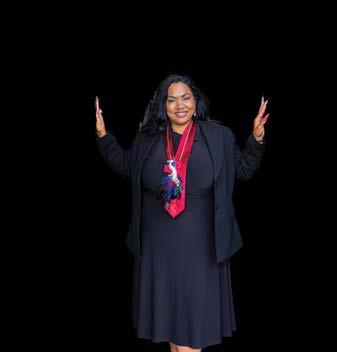
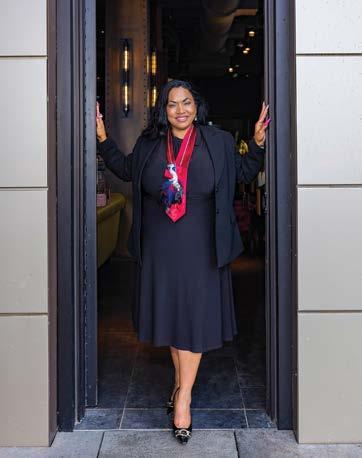


By Steve A. Peirce


If you are ever in court at the Bexar County Courthouse or maybe even Justice of the Peace Court, you might see a lawyer, nearing 90 years old, representing a poor person in a small consumer matter. And you would notice that lawyer squinting unusually close to a monitor with the text blown up so large that you can see it from across the room. And you might think, “What a shame that this half-blind lawyer is having to work well beyond retirement age handling such small cases.” But you would be thinking wrong. That lawyer is Luther H. “Luke” Soules III, one of the most successful courtroom lawyers in Texas history. For the last two decades, he has been handling consumer cases pro bono, and he remains a formidable advocate.
I’m sitting in Luke’s office, a small one-story building just outside Loop 410. The décor is ranch style, as if Luke had acquired Ben Cartwright’s furniture and art from the set of Bonanza. Indian beadwork, a saddle, and western paintings and sculptures accompany law books (some written by Luke) and memorabilia and awards from his storied legal career. There are several courtroom artists sketches of his trials on the wall, and how many of us have those? Though he practices solo, his firm retains the name of Soules & Wallace, the “Wallace” being his longtime law partner, retired Texas Supreme Court Justice James P. Wallace. The entry to his office has a portrait of Justice Wallace, accompanied only by a portrait of another revered law partner, Luis Garcia. “Luis worked for the City Attorney’s office, and I saw him in court one day when he announced that he was retiring. Everyone liked Luis. I approached him and offered him a position,” Luke recalls.
We are waiting for a meeting with representatives from the University of Texas Law School, where Luke will discuss with them a potential establishment there and at Texas A&M Law School of a transformative new program for equal access to justice for the underserved, to be funded in part by a large donation from the foundation Luke started. While he is showing me the special equipment he uses to practice law as a blind person, he answers a cell phone call, which turns out to be an unsolicited offer to sell him home insurance. Ever the advocate, Luke informs the caller that he is a lawyer who happens to be suing that insurer for wrongfully refusing to replace a $10,000 hail-damaged roof of a pro bono client, so no thanks. The caller didn’t make the sale, but he has a story to tell. And so does Luke.
In my experience writing about some high achievers in the legal profession, something has occurred to me. Many of them undertook responsibility and leadership roles at an early age, and most have supportive, though not necessarily wealthy, parents. Luke Soules was one of those youngsters. He grew up in Dallas and spent his early summers helping with chores on the Soules grandparents’ farm in Goldthwaite, Mills County, Texas. He joined the Boy Scouts at age 10, became an Eagle Scout at 16, and continued to support scouting as an adult, earning a Silver Beaver Award in 1994 for his volunteerism. At 14, he started a lawn, garden, and landscaping business, towing his lawnmower on his bike and knocking on doors in the neighborhood. When Luke was 16, his father, then a sales manager for Canada Dry Bottling, put him through the company’s sales training program, and young Luke assembled product displays in grocery stores. At 18, he was dispatched to Louisiana in the summer to sell Canada Dry ginger ale to the grocers. In high school, he was in R.O.T.C., ran track, took art classes, and served as Student Council President.



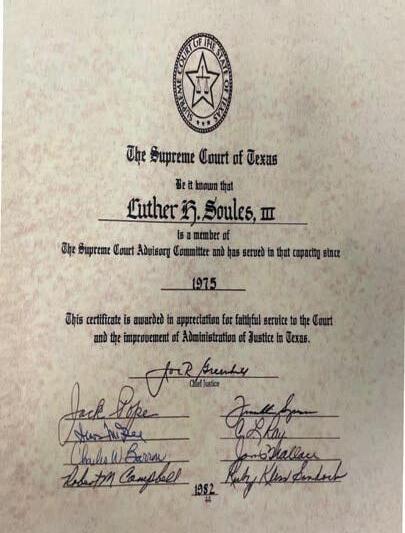
Luke arrived at Texas A&M University in the fall of 1957, as a young cadet in the A&M Corps of Cadets. He had followed two uncles who graduated from Texas A&M on G.I. Bills after World War II. Five years later, he emerged with two degrees, a B.A. in Economics and a B.A. in Mathematics. He was deeply involved in the MSC Student Conference on National Affairs (“SCONA”), an organization of college students from all military academies and top educational institutions who convene to discuss issues and policy proposals of national importance. Think of college students with ideas on how to run the country. In his fifth year at A&M, he served as A&M’s delegate to the similar Air Force Academy Assembly conference, and he earned his room and board that year as a dormitory supervisor in nearby Bryan at Allen Military Academy for boys. College summers were spent earning funds to pay for the next year. Luke’s dad took an executive position marketing Ranch Style Beans, and after Luke’s freshman year, Luke spent the summer selling Ranch Style Beans to grocers in Arkansas. “Ranch Style Beans are pinto beans, and no one in Arkansas ate pinto beans. So I would
cold-call at the grocery store with a can of Ranch Style Beans and two plastic spoons. I would open up a can of beans, give the manager a taste with one spoon, and take a taste myself with the other spoon,” Luke recalls. It was an eye-opening (and can-opening) experience for Luke. “I met and got along with strangers of every description, all good working people,” he says.
A&M alums are a passionate and dedicated lot to their alma mater, but few as much as Luke Soules. Luke and his wife Andrea have financially supported A&M with an Endowed Chair in Global Macroeconomics Theory and Policy in 2024, scholarships to the Department of Economics, and other programs at the university such as the Century Club, the Chancellor’s Century Council, and the Texas A&M Mariachi Band. All told, his financial contributions to A&M run in the seven figures and, in light of the seismic 2025 global trade-shift activities, his Endowed Chair in Global Macroeconomics—inaugurating in 2024 the unique and transformative new program at the Economics Department—appears somewhat prescient.
Upon graduating from A&M in 1962, young Luke’s plans for law school gave way to a plea from Luke’s dad (Luke Soules, Jr.), who was starting a business called Luke Soules, Inc. Luke’s dad had grown up a farm boy in Mills County, was valedictorian of his high school class, and had attended a two-year program at Brantley and Draughon business college in Abilene. Through Luke Soules, Inc., he had an opportunity to represent Ranch Style Beans, the product line of Fort Worth-based Great Western Foods. “Dad needed my brother Joe and me to work for him, because he didn’t have the money to pay for employees, and the opportunity required the family to move to San Antonio,” Luke recalls. “So my brother and I went to work for dad’s company. I worked there for two years, while my brother Joe made a career with the company.” Luke Soules, Inc. did quite well, ultimately becoming part of Acosta Brokerage, the largest national food sales and marketing company. “My parents were great examples, and they were attentive despite not having a lot of resources,” he says. Luke so revered his dad, the farm boy turned entrepreneur, and his mother Merle, the farm girl turned registered nurse and homemaker, that he named his charitable foundation, the Luke and Merle Soules Family Foundation, after them. Thus far, the Foundation has donated over $7 million to various charitable, educational, and philanthropic causes.
After his stint with Luke Soules, Inc., Luke started at University of Texas Law School, graduating in 1967. “I was starting a bit late, because I was almost 7 when I started first grade; and I had a fifth year at A&M and two years working for my dad,” Luke recalls. During law school, he worked as a Teaching Quizmaster, interned for Texas Senators A.R. “Babe” Schwartz and Jack B. Strong, and managed his apartment complex in exchange for his rent. He participated in moot court competitions and was awarded his first of many legal accolades to come, the UT Law School Student Bar Association Consul Award, given to “senior law students who have made outstanding contributions to the School of Law.”
Upon law school graduation, Luke was selected as the sole briefing attorney for Texas Supreme Court Chief Justice Robert Calvert for a one-year term. “No baby lawyer could possibly hope for a better beginning,” says Luke. “As a briefing attorney, I was able to participate in the reasoning of decisions


At Broadway Bank Private Banking, we provide you a single point of contact, available seven days a week. Your banker listens to your personal and professional goals to create custom strategies that feel just right. Come see what it’s like to bank in your own backyard.


(210) 681-0747




Your IT Solutions Experts who can help with:
• HIPPA Compliance (TX HB300 applies)
• Cloud: storage, files, computers, servers
• Computers: repairs, upgrades, purchases, encryption
• Servers: setup, repairs, maintenance, purchases
• Email: domains, migration, backup, encryption
• Office 365: email, OneDrive, backup and Office software
• VoIP phones: includes Quality of Service (QoS) and backup internet
• Network: devices, setup, repairs, maintenance
• Call when you need us or customized service options available
• Remote and on-site support, antivirus programs, virus removal, maintenance www.pstus.com • 210-385-4287 support@pstus.com
Mention this ad and receive 20% off your first invoice.
and observe the court’s deliberative process.” Luke considers Justice Calvert—“a giant legal scholar”—to have been his mentor. “Justice Calvert opened a lot of doors for me,” he says. And maybe the best bar service decision Luke ever made (and there are many) was to stay connected with the Texas Supreme Court as a member and Chair of the Supreme Court Advisory Committee on trial and appellate rules. The rules advisory committee serves the Supreme Court by advising on how trial and appellate procedural rules are working and makes recommendations on changes to the rules to improve the administration of justice. He was reappointed and served under six successive Chief Justices. “I served on the rules advisory committee for thirty years, the last twenty as Chair of the committee,” says Luke. Among other things, Luke spearheaded changes to the summary judgment rules, recusal rules for Texas judges, and standards for determining discovery sanctions. And knowing the rules means knowing the cases interpreting the rules. “The Texas appellate courts issue about 900 opinions a year,” says Luke, “and I would read each one of them as soon as they were published in the advance sheets.” And if you don’t believe him, see Chip Babcock, Tribute to William V. Dorsaneo, III, 75 SMU L. Rev. 11 (2022) (“Luke would read advance sheets (I mean all of them) and send cases to his colleagues that he thought would interest them, especially Bill [Dorsaneo]”). This made Luke Soules the statewide go-to authority on the Texas rules. He shows me the volumes of Dorsaneo and Soules’ Texas Codes and Rules: Civil Litigation, a bible of case law and commentary on the Texas Rules authored by Luke and the aforementioned Professor Dorsaneo. “There are over 3,000 Texas Supreme Court cases cited alone in that book,” says Luke.
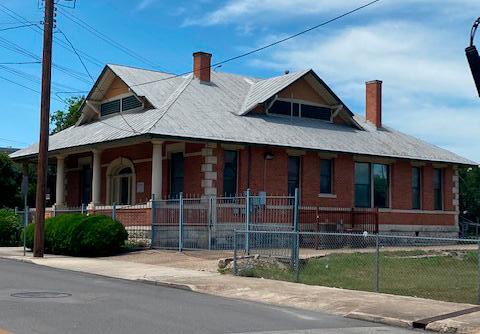

“I decided to start my legal career in San Antonio because Chief Justice Calvert said that it had an outstanding bench and bar, and because I’m an outdoorsman. I don’t play golf or tennis, but I loved to hunt and fish and take photographs, and the San Antonio and South Texas area was perfect for that,” Luke says. He ultimately acquired the Lagos Ranch in Medina County, known for its many lakes, and became a veritable cinematic image (think Robert Mitchum) of a cigarchomping Texas rancher-trial lawyer (though these days, he’s more likely to place a chaw of tobacco between his cheek and gum). And he trained bird dogs, winning a national field trial championship with his two-year-old “derby dog,” Kismet. Later, he got into genealogy, and in typical Luke Soules fashion, it was a thorough job. He discovered that he is a direct descendent of George Soule, a Mayflower bondage passenger and Mayflower Compact signer, and his ancestors include six other Mayflower passengers. So he joined and supported Soule Kindred of America, an organization of the descendants of George Soule. He is also a member of the Sons of the American Revolution by descent from Moses Soule and a member of the Sons of the Republic of Texas.
Luke began his private-practice job search by sending letters and resumes to law firms, with many no-callbacks. One such no-callback was the venerable law firm of Matthews, Nowlin, Macfarlane, & Barrett (later Matthews & Branscomb). Well, Luke just showed up at the firm, informed the hiring partner that he had not received a response to his letter, and soon was offered and took his first law firm job there. Not unlike cold-call selling Ranch Style Beans, I suppose. “My first assignments were representing City Public Service in ‘pole cases’ where someone would run into an electric pole, and the insurance company would not pay CPS. I got a lot of jury trial experience there,” says Luke. Then a big case came along in Luke’s third year as lead trial lawyer in the

Sarita Kenedy East will contest, representing a legatee under the will, the Oblate Fathers of Mary Immaculate. It was a seven-month jury trial in Corpus Christi, interrupted for two months due to Hurricane Celia, a trip to the Texas Supreme Court, a bench trial on remand, and another trip to the Texas Supreme Court. In the end, Luke’s client prevailed, acquiring a portion of the Kenedy Ranch with 1,000 mineral acres of rich oil and gas production in Kenedy County. Luke was also on the ground floor doing legal work on the birth of Southwest Airlines, working with Herb Kelleher, who would one day become the airline’s celebrated CEO. “Herb was a partner at Matthews at the time,” Luke says. “Herb was a genius and a joy to work with, who chain-smoked, drank Wild Turkey, and worked twenty hours a day. I never left the office when Herb wasn’t still there.”
But in the midst of his early years of private practice, Luke was diagnosed with central serous macular disease, an incurable condition of the eyes with no known treatment, and lived from that point on with the bleak prophecy that one day his condition would develop into blindness.
Luke later moved with Kelleher to join the firm that would be known as Oppenheimer, Rosenberg, Kelleher & Wheatley, where he practiced for several years as a partner, continuing to work on Southwest Airlines cases. At some point, he realized that he would not gain the stature of the name partners, so he started a firm with Jim Cliffe, called Soules & Cliffe, then a firm with John McCamish, named Soules & McCamish. After a few years, Luke founded the firm Soules & Wallace in the early 1980s. It was a huge turning point, and the right move.
As a trial and appellate courtroom lawyer, he has tried to verdict more than 100 jury cases and has argued as lead appellate counsel
Dr. Neal Small is a board certified orthopedic surgeon with over 30 years of clinical practice. Dr. Small has performed over 15,000 orthopedic procedures. He has extensive nationwide experience as an orthopedic expert, having prepared over 1,000 reports pertaining to Standards of Care, Causation, Usual and Customary Medical and/or Surgical Treatment. He has performed hundreds of Independent Medical Exams and served as an expert witness in depositions and at trial. Dr. Small is experienced in all aspects of orthopedic care including trauma, sports medicine, arthroscopic surgery, total joint replacement and spine.

• Orthopedic Surgery
Spine Surgery
Medical Malpractice
Personal Injury
Sports Medicine • Independent Medical Examinations (214) 414-9447 | www.orthoexpertservices.com neal@orthoexpertservices.com





over 50 appellate court cases. He has argued before the Supreme Court of Texas, Fifth and Eleventh Federal Circuit Courts of Appeals, briefed for appellees cert denied cases in the Supreme Court of the United States, and argued at every appellate court in the State of Texas except the 11th Court of Appeals in Eastland, Texas. In no particular order, here are some of his greatest epic battles. He defended Halliburton, the parent of Brown & Root, in a $20-billion claim involving nuclear power plant construction at the South Texas Nuclear Project. He was part of the plaintiff Pennzoil team litigating against Texaco for tortious interference with the Getty Oil acquisition; the case with the largest jury verdict in American history ($10 billion), that, after appeals and the Texaco bankruptcy, was ultimately settled for $3 billion. He represented the plaintiff Hermann Hospital Estate to recover $2 million in funds from one of the corrupt trustees who looted the hospital’s charitable trust out of millions. He and Ricardo Cedillo represented defrauded Mexican investors against Walmart in the largest jury verdict ($628 million) in Bexar County history. He represented plaintiff Valero in recovering $12 million against a refinery services contractor in connection with an explosion at the refinery. He successfully defended Disney to a jury verdict rejecting antitrust monopoly claims under the Sherman Act. He represented plaintiff DPT Laboratories and recovered a $45-million settlement for the expropriation of Lubriderm lotion trade secrets. He represented plaintiff McLean Trust, recovering $1.5 million for a botched uranium strip mine. Barry Chasnoff and he protected the patent of Dr. Julio Palmaz, inventor of the original heart stent. And he represented the women plaintiffs in the several appeals during the silicone breast


implant litigation against the Dow companies. He’s been on the plaintiff and defense counsel sides of cases where lawyers have been accused of wrongdoing, disciplinary violations, or negligence, and as such, he became Board Certified as an ABA American Board of Professional Liability Attorney to go with his Texas Board Certifications in both Civil Trial and Civil Appellate practices. As one can see, Luke Soules does not shy away from complex, scientific, or difficult cases, and he does not mind the money, either. And your phone does not ring for these types of matters unless you have the reputation. “One of the reasons I got to work on so many big cases that were not in San Antonio was that I had a statewide reputation from my work on the rules advisory committee and from my bar activities,” Luke says, citing referrals he got from Houston legal giants Jim Kronzer, who got Luke involved in the South Texas Nuclear Project litigation and the Pennzoil versus Texaco case, and John O’Quinn, who was plaintiff’s’ lead trial counsel in the breast implant litigation.
During this time, as if the gods had somehow been angered in the wake of victory, Luke’s vision started to noticeably fail. “My vision started getting progressively worse in the 1990s,” Luke says. Then around 2005, a trip to renew his driver’s license didn’t go well. He couldn’t pass the vision test and was declared legally blind. “It was a tough transition to have to start asking for help in vision-dependent activities,” he says. “I had to decide what to do with the law firm, which was about twenty lawyers, and about thirty support staff. We had an amazing group of compatible, talented people. I was one of the main rainmakers, and we decided together that the others could be
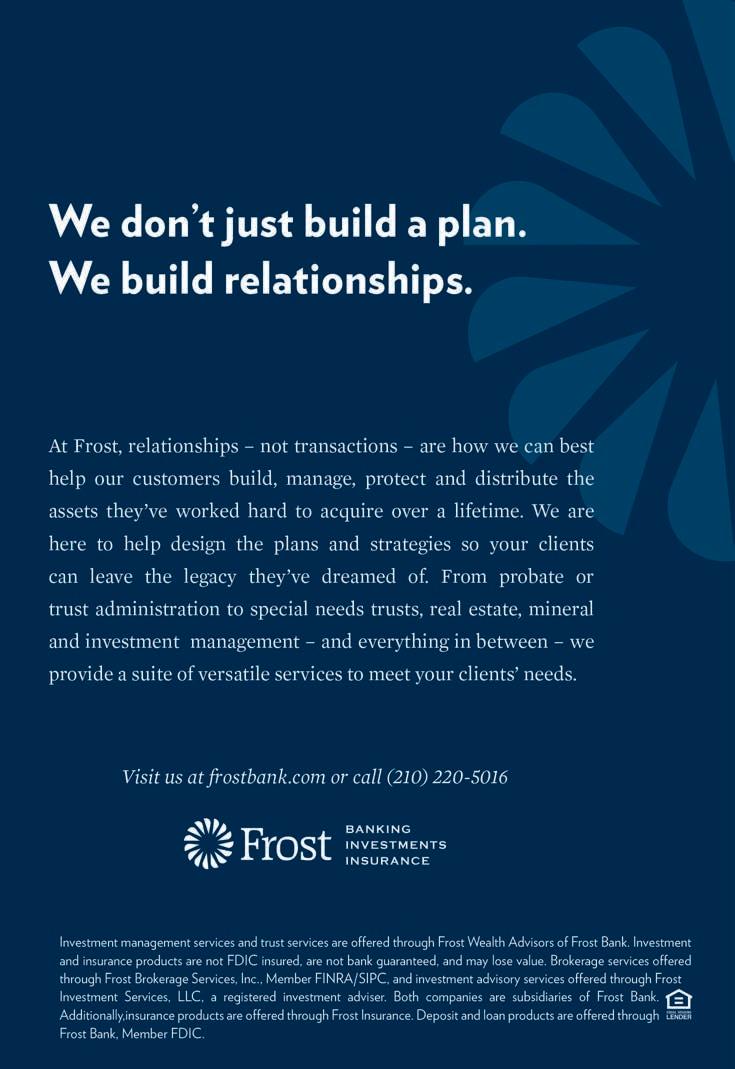




better served by relocating when I left. When the firm disbanded, many were welcomed at the prestigious law firm Langley & Banack, and we were able to help place every lawyer and employee in secure positions in other jobs at least equivalent to their Soules & Wallace jobs,” Luke adds, “I’m very proud of us for that.”
There are not too many living people with an award named after them. But in 2008, the Litigation Section of the State Bar of Texas established the Luke Soules Award, given each year in January. The award is given to an attorney who embodies excellence in the practice of the law and exemplary service to the State Bar. It is designed to annually recognize a Texas legal practitioner who demonstrates outstanding professionalism and community impact. Appropriately, the very first recipient of the Luke Soules Award was Luke himself.
After his firm closed, Luke decided to take another shot at practicing law, also joining Langley & Banack, where he had to learn new software and technology to assist with his blindness (let’s just say Luke was not into computers much before then). “I got my computer training from the Lighthouse for the Blind, and at no charge,” says Luke. “I am most grateful for that.” He still had one more big case left in him. In 2009, he tried his last commercial case, a patent infringement matter, recovering a jury verdict of $76.2 million. Since then, he’s done only pro bono work, representing underserved persons and families in Texas.
“I got started doing pro bono work when I got on the ad litem wheel at the courthouse, and then I kept getting calls from the families in need of other legal help,” says Luke. “I get a lot of personal satisfaction in helping people. I’m now trying to get a new and innovative program started for equal access to justice for the poor and underserved with a combination of support from law schools, the legal community, and philanthropic organizations. We are serving less than 10% of the need right now,” he says.
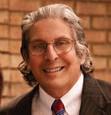
You’re probably wondering how anyone can do so much in a career and still have a personal life. There’s a framed newspaper feature article on the wall of Luke’s office, the gist of which is that Luke Soules is sort a one-man show. I asked Luke about the article. “I didn’t like that article at all,” says Luke. “It implies that I do everything myself and I had no help, which is absolute nonsense.” So here we make an attempt to correct that, risking that a deserving person might be unintentionally left off the list:
“I had the support of my family. I’ve had the support of the very best of partners, associate lawyers, and staff, and my assistant Melanie Vaneck, paralegal Holly Simmons, and secretary Genie Canedo, all of whom who worked for me for thirty years. Now I have my assistant and right arm, Cheryl Seibert, an Aggie and a CPA, who works with me every day. And my dear friend and profoundly accomplished lawyer Chris Negem takes time from his busy family law practice to meaningfully support and contribute to our pro bono efforts. Over the years, I have worked with so many great lawyers in my law firm. Of course, Justice James Wallace, retired Justice of the Supreme Court of Texas, and his wife Martha, were highlights of my professional and personal experiences. And Jim Cliffe, my first partner at the original Soules & Cliffe, Susan Patterson and Suzanne Cowper who also worked on the Dorsaneo & Soules book, trial lawyers Richard Butler and Darryl Carter, and appellate lawyers Sara Murray, Rob Ramsey, and Sarah Duncan who became a Justice on the Fourth Court of Appeals. And so many in other areas of our law firm’s practice,” says Luke.
“I also learned that, from time to time, I needed family-time off, so I made it a point to take a week vacation every quarter, which I was able to do with the help of my colleagues.” he says. “More days of vacation broken into shorter stays kept me connected to my practice while accommodating regular quality time with Andrea and my four daughters—Laura Nell, Brett, Carol Lee, and Sydney—and my son Luther IV.”
In 2025, Luke received two more prestigious lifetime awards. The Texas A&M College of Arts & Sciences awarded Luke its 2025
Medal for Social Sciences, awarded annually to only one alumnus by the College “honoring career excellence and social commitment as a Distinguished Former Student.” And the Texas Bar Foundation awarded him the 2025 Outstanding 50 Year Lawyer award, given since 1974 to only 153 Texas lawyers who “manifested adherence to the highest principles and traditions of the legal profession and service to the public in the community in which he or she lives.”
It has been an odyssey for Luke Soules, who has practiced law for fifty-seven years now. To this day, he gets excited about the challenge of practicing law at whatever level. “I’ve done over 6,000 hours of pro bono work,” he says. “I’ve got one pro bono case right now with over 2,000 hours, representing an elderly blind woman trying to save her homestead.” I asked him why he keeps doing it. “I enjoy the people and the challenges, and I guess I never got tired of it,” was his simple answer. So don’t underestimate Luke Soules. Like the hero Odysseus of Greek mythology, a warrior-king surviving many trials, almost unheard of for years, he returns as an old man to open up a can on his opponents.

Steve A. Peirce is Of Counsel with the San Antonio Office of Norton Rose Fulbright. He recommends the 1997 mini-series The Odyssey, the 2000 Coen Brothers movie, O Brother, Where Art Thou (based on The Odyssey), and eagerly awaits the upcoming 2026 Christopher Nolan feature film version of The Odyssey. Steve can be reached at (210) 270-7179 and steve.peirce@nortonrosefulbright.com. And many thanks to Andrea M. Soules, Susan R. Burneson, and Luther H. Soules IV for background information and research, and, of course, to Luke Soules for sharing his time and stories.

Chellie Thompson
The 2024–2025 San Antonio Bar Association Board of Directors endorses the March 6 letter to the editor by our esteemed past presidents, who reaffirmed the enduring importance of the rule of law and the vital role of the judiciary in our constitutional democracy. We share their conviction that the judicial branch is an equal and co-equal branch of government, alongside the legislative and executive, as established by the Constitution. Any attempt to intimidate or undermine judges, especially through personal attacks on them or their families, is not only dangerous, it is unpatriotic. Such rhetoric threatens the independence of the judiciary and the democratic principle.
As members of the Texas legal profession, we affirm our commitment to a higher standard of conduct and public service, as reflected in the Texas Lawyer’s Creed, which mandates that we uphold dignity, integrity, and respect for the legal system. The Creed is a solemn reminder that lawyers are stewards of justice and that professionalism demands more than mere compliance. It demands leadership in defending the rule of law.
Likewise, the Articles of Incorporation of the San Antonio Bar Association call on us to protect and advance the professional interests of our members and to promote the advancement of justice. In standing by the letter authored by our past presidents, we fulfill that duty and affirm our enduring dedication to the Constitution and the core values that define the American legal tradition.
By Charlie Gonzalez and Wallace B. Jefferson, San Antonio Express-News, 3–6–25
(republished with permission from the San Antonio Express-News).
We are former presidents of the San Antonio Bar Association. We are Republicans and Democrats who have been public servants in Congress and the judiciary, and we have engaged in private practice for decades. We agree that, while each U.S. president has the right to pursue policy objectives, the courts are the proper place to settle disputes about these goals.
Presidents of both parties abide those rulings and rescind laws the courts have invalidated. This honors the Constitution’s directive that presidents “shall take Care that the Laws be faithfully executed.”
Honoring laws is the cornerstone of our constitutional form of government. We have the oldest written Constitution in the world. It has endured because the people, and its branches of government, agree that the laws must be enforced equally. Because human beings will never achieve perfection, the Founders gave the means to restrain unbridled power.
The Constitution of the United States created three branches of government: the legislative, the executive and the judicial.
Although equal, each branch plays a different role, defined in articles and amendments to the Constitution and amplified by judgments from the Supreme Court of the United States.
Our Founders wanted a system that ensures no one branch exercises unconstrained control.
Public servants swear oaths to place the Constitution above personal interests, political party loyalties or other interests.
A question arises with each new administration, with every era and all wars, foreign and domestic: Are our public servants living up to that oath? And just as important, who decides whether they are? Can Congress declare its own laws constitutional? Can the president, claiming an electoral mandate, ignore Congress or the courts? What if Congress or the president disagree with a court’s ruling?
The Constitution answers these questions. In 1787, the Framers may not have predicted every future struggle, but they agreed on who would have the final say. The Constitution says: “The judicial Power shall extend to all Cases, in Law and Equity, arising under this Constitution, the Laws of the United States, and Treaties made, or shall be made, under their Authority.”
It then declares: “This Constitution, and the Laws of the United States ... made in Pursuance thereof ... shall be the supreme Law of the Land.”
In the landmark Marbury v. Madison, the Supreme Court confirmed in 1803 its power of judicial review, declaring: “It is emphatically the province of the judicial department to say what the law is.”
Resistance to this idea has surfaced throughout our history.
In 1833, President Andrew Jackson suggested that presidents and the Congress could judge constitutionality for themselves. In 1972, President Richard Nixon’s lawyers claimed he did not have to follow a congressional subpoena based on “executive privilege.” But Special Counsel Leon Jaworski warned that our entire constitutional system would be in danger if a president could simply declare what the Constitution means without oversight from the courts. That remains true today.
We must not substitute raw power for liberty and justice. We must reaffirm our faith in these principles of democracy. And we must keep that faith across all administrations of either party, for the rest of time.
Charlie Gonzalez, a Democrat, is a former judge and U.S. representative. He served Texas’ 20th Congressional District from 1999-2013. Wallace B. Jefferson, a Republican, is a partner at Alexander, Dubose & Jefferson. Prior to joining the firm in October 2013, he was chief justice of the Supreme Court of Texas.
Joining the authors, San Antonio Bar past presidents, the Hon. Charlie Gonzalez (1989–1990) and the Hon. Wallace Jefferson (1998–1999) are the following San Antonio Bar past presidents:
Robert Allen (1993–1994)
Hon. Karen Angelini (2004–2005)
Bobby Barrera (2016–2017)
Arthur Bayern (1980–1981)
Michael J. Black (2000–2001)
Joseph Casseb (1996–1997)
Steve Chiscano (2023–2024)
Henry W. Christopher, Jr. (1974–1975)
Tom Crosley (2019–2020)
Mary Belan Doggett (2005–2006)
Sue Hall (1990–1991)
James Hall (2001–2002)
Lamont Jefferson (2006–2007)
Tom Keyser (2014–2015)
Hon. Dan Naranjo (1984–1985)
Hon. Larry Noll (1992–1993)
Dan Pozza (1995–1996)
Hon. Karen Pozza (2003–2004)
Fidel Rodriguez, Jr. (1994–1995)
Carl Robin Teague (2009–2010)
Marty Truss (2015–2016)
Hon. Beth Watkins (2017–2018)
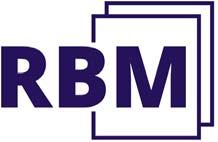
Support of Litigation
Geo-Structural Forensics
Shallow Foundations
Deep Foundations
Retaining Walls
Excavations
Since 1987, Every Texas attorney must take an oath before licensure.
Texas Oath of Attorney Government Code §82.037
I, , do solemnly swear that I will support the constitutions of the United States and Texas; that I will honestly demean myself in the practice of the law; that I will discharge my duties to my clients to the best of my ability; and that I will conduct myself with integrity and civility when dealing with and communicating with the court and all parties. So help me God. (optional)
The Texas Lawyer’s Creed was adopted in 1989 by the Texas Supreme Court and the Texas Court of Criminal Appeals as a mandate for professionalism and a guide to ethical conduct.
RBM Industries, Inc.
18911 Hardy Oak Blvd. Suite 121 San Antonio, TX 78258
P: 210-469-4611
F: 210-404-2402
info@rbm-inc.com www.rbm-inc.com
Dr. Rozbeh B. Moghaddam (Roz), a licensed civil engineer with a doctoral degree and extensive expertise in foundations, Geo-Structural Engineering, and expansive soils, offers specialized litigation support to clients facing complex construction and soil-related disputes. With over 20 years of experience and a deep understanding of soil mechanics and foundation behavior, Roz provides expert evaluations, data analysis, and clear scientifically grounded testimony to support case proceedings.
Saturday, September 20, 2025
Rosenberg Sky Room | UIW | 847 E. Hildebrand
SABA Lifetime Achievement Award
Ted Lee
SABF Outstanding Lawyer in Community Service
Andy Segovia
SABF Peacemaker
Dwayne Robinson
Incoming President
Nick Guinn

SAYLA Outstanding Young Lawyer
Chris Mazzola
SAYLA Liberty Bell Jacquelyn Callanen
SAYLA Outstanding Mentor The Honorable
Patricia Alvarez
Outgoing President
Patricia Rouse Vargas
SPONSOR AND REGISTER

As a distinguished member of the San Antonio Bar Association, you’re invited to discover a new standard of automotive excellence. The Principle VIP Rewards Program, Elite Tier, is specifically designed for individuals like you, offering exclusive engagement opportunities and premium benefits tailored to your discerning taste.

Let us make your first payment for you—up to $1,500! Paying Cash? Additional discounts are available!
Receive $100 off services or collision repairs of $500 or more, or a $40 Parts and Gift Shop Voucher (or 30% off one item).
Expect a seamless and tailored journey designed to meet your every need.

Editor’s Note: In the May–June 2025 issue of San Antonio Lawyer, Part I of “The Trial of O.J. Simpson” reviewed O.J. Simpson’s successes on and off the football field; his marriage and divorce from Nicole Brown Simpson, including
More than any other in the twentieth century, the trial of O.J. Simpson was the quintessential “trial of the century.” It was covered to saturation by both the electronic and print press, and avidly followed by consumers of spectacle, both in America and abroad. No trial before or since has captured the minds and passions of so many Americans or sparked so much media attention.
By Mark J. Phillips and Aryn Z. Phillips
the documented instances of domestic violence perpetrated by O.J.; the horrifying scene at Nicole’s Brentwood home where she and Ronald Goodman were brutally murdered; and the bizarre low-speed chase on the Los Angeles
freeway before O.J. Simpson was eventually arrested for the double murder. Americans were captivated by the televised vehicle pursuit, and they remained transfixed when the trial was eventually televised, as well.
Prosecutors were convinced of Simpson’s guilt. Held without bail following his arrest, Simpson was arraigned on June 20, 1994, and the assistant District Attorney assigned to the case, Marcia Clark, standing with District Attorney Gil Garcetti, declared in a press conference afterwards that Simpson was the sole murderer. On July 22nd, Simpson pled “absolutely one hundred percent not guilty,” and the trial was assigned to Judge Lance A. Ito.
Because the murders were committed in the upscale West Los Angeles neighborhood of Brentwood, the District Attorney’s office would have been within its rights, indeed would have kept with practice, by filing the charges in the Santa Monica judicial district where the crimes occurred. Instead, District Attorney Garcetti filed the case in the central district downtown, where the percentage of potential black jurors was much higher, allegedly for the convenience of attorneys
and court staff. It was a tactical decision later criticized as a “monumental blunder.”
That was evident when jury selection got underway on September 24th. Present that day were 250 potential jurors, Simpson attorneys Robert Shapiro and Johnnie Cochran, and Marcia Clark and Bill Hodgman for the prosecution. Both sides were accompanied by jury consultants. Of the ten women and two men ultimately chosen, eight were Black, two were Hispanic, one was white/Native American, and one was white. The racial composition of the jury differed dramatically from that of the community, and even from the pool of prospective jurors, which had initially been 40% white, 28% Black, 17% Hispanic, and 15% Asian.
Simpson quickly assembled for himself a powerful team of lawyers. Lead attorney Howard Weitzman gave way to Robert Shapiro, perhaps as a consequence of Weitzman’s questionable early decision to allow Simpson to be interviewed under oath, without counsel present, on the day after the murders. Though well-respected, Shapiro had not yet tried a murder case.1 He was soon joined by Johnnie Cochran, an experienced criminal defense attorney best known for his unsuccessful defense of Black Panther member Elmer “Geronimo” Pratt some twenty years earlier, and the more recent acquittal of Michael Jackson on child molestation charges. Next to come aboard was F. Lee Bailey, long past his youth but famous for the defenses of Sam Sheppard and Patty Hearst. Two New York lawyers, Barry Scheck and Peter Neufeld, were hired to handle the blood evidence, and nationally known Harvard law professor Alan Dershowitz was retained to manage appellate issues. Arguably the best lawyers money could buy, they were quickly dubbed the “Dream Team” by the media.
Arrayed against them was the entire weight of the prosecutor’s office, marshaled under lead trial attorneys Marcia Clark and Christopher Darden. Clark was a prosecutor with fifteen years of experience, notable for having successfully prosecuted troubled fan Robert John Bardo for the murder of actress Rebecca Schaeffer in 1989. Darden, then thirty-eight, had gained a reputation for prosecuting police misconduct, and as an African American was thought to defuse the perception of racial bias on the part of prosecutors. They were joined by a small army of consultants, experts, investigators, and attorneys. All told, twentyfive prosecuting attorneys were assigned to the case, thirteen full-time and twelve part-time.2
After nearly two months of pre-trial motions, opening statements came on
No trial before or since has captured the minds and passions of so many Americans or sparked so much media attention.

• Experienced, having conducted more than 25,000 mediations since 1989 with more than 850 years’ experience practicing law
• Committed to the mediation process and devoted to the ethical practice of law
• Covered by the AAM Member Insurance Group Policy, an arbitrator and mediator professional liability insurance
For more information, contact the local San Antonio Chapter. www.attorney-mediators.org/SanAntonioChapter Gary Javore - gary@jcjclaw.com
Patricia O. Alvarez
888.413.6630
patricia@alvarezdr.com
Michael J. Black
210.823.6814
mblack@burnsandblack.com
Paul Bowers
713.907.7680
paul@ptbfirm.com
John K. Boyce, III
210.736.2224
jkbiii@boyceadr.com
Leslie Byrd 210.229.3460
leslie.byrd@bracewell.com
Kevin Chaney 210.889.4479
kevin@kevinchaneylaw.com
Debbie Cotton 210.338.1034
info@cottonlawfirm.net
Aric J. Garza
210.225.2961
aric@sabusinessattorney.com
Charles Hanor
210.829.2002
chanor@hanor.com
Gary Javore
210.733.6235
gary@jcjclaw.com
Recommended by Judges and Attorneys
Alex Katzman
210.979.7300 alex@katzmanandkatzman.com
Daniel Kustoff 210.614.9444 dkustoff@salegal.com
J.K. Leonard 210.445.8817 jk@jkladr.com
Cheryl McMullan, Emeritus 210.824.8120 attyelder@aol.com
Dan Naranjo 210.710.4198 dan@naranjolaw.com
Patricia Oviatt 210.250.6013 poviatt@clarkhill.com
Jamie Patterson 210.828.2058 jamie@braychappell.com
Diego J. Peña 817.575.9854 diego@thepenalawgroup.com
Don Philbin 210.212.7100 don.philbin@adrtoolbox.com
Edward Pina 210.614.6400 epina@arielhouse.com
Elizabeth “Sissy” Preston 713.412.1458
epreston@advmediation.com
Richard L. Reed, Sr. 210.953.0172
rick.reed@steptoe-johnson.com
Wade Shelton 210.219.6300 wadebshelton@gmail.com
Richard Sparr 210.828.6500 rsparr@sparrlaw.net
John Specia 210.734.7092 jspecia@macwlaw.com
Phylis Speedlin 210.405.4149
phylis@justicespeedlin.com
Lisa Tatum
210.249.2981 ltatum@tatum-law.com
James Upton
361.884.0616 jupton@umhlaw.com
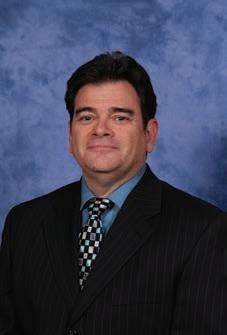
Gallant Computer Investigative Services, LLC
David T. Gallant
Digital Forensics/Cell Tower Geolocation Mapping Cell Phone Records Analysis for MVAs
Licensed Texas Private Investigator (A15633)
Retired Federal Agent (AFOSI)
Court Certified Expert Witness (Federal/State/Military) (210) 271-2999
Titan Building
2700 NE Loop 410, Ste. 301, San Antonio, TX 78217 www.WhatsOnThePhone.com
The Proof is in the Data™

January 23, 1995. Over the following eight months, until jury deliberations began on October 2, 1995, the prosecution and defense together presented 150 witnesses, alternating by turns from sensational to mind-numbingly tedious. The jury chafed at the length of the proceedings, but the media reveled in it. Two hundred fifty new phone lines had to be installed in the court’s pressroom to handle the needs of more than 1,150 journalists credentialed to cover the trial.3 Of the fiftyeight seats in the courtroom, twenty-four were set aside for the press. The reporters not seated inside roamed the corridors, interviewing anyone with any connection to the trial, and some without.
Howdy | definition: a greeting as in “How do you do?” As in, howdy, we’d like to help you be successful.
We know Texas. Since 1979, we’ve been helping Texas lawyers, across all Texas jurisdictions, in all areas of practice. We help you be successful by providing risk management resources, best practices recommendations and exceptional customer service.
Howdy is just the beginning of our long-term relationship.
Apply today.
We help Texas attorneys succeed.
And, of course, the proceedings were televised. CNN, Court TV, and local station KTLA covered the trial live every day. Every other news organization summarized the daily proceedings, often with commentators (“talking heads”) of varying quality. On CNBC, attorneyturned-journalist Geraldo Rivera hosted a nightly roundup of each day’s testimony.
The live broadcast of criminal trials was then, and remains today, controversial. Judges, lawyers, and witnesses cannot resist performing for a television audience, and the interests of the criminal defendant suffer. The number of objections by counsel multiply exponentially as they perform for the cameras---in the Simpson trial an astonishing 16,000 times--and juries grow weary as trials lengthen. Measured against these disadvantages are the rights of citizens to witness a free and open courtroom dispensing justice in the manner the law requires. Of perhaps greater concern to the city of Los Angeles were the still raw memories of the riots two years earlier, following the acquittal by a suburban white jury of the four police officers who beat black motorist Rodney King. In that frightening and bitter week, fifty-three citizens died, and more than 1,000 buildings were torched.
or (512)
After opening statements by both sides, the prosecution followed with more than seventy witnesses over ninety-nine full trial days in a detailed and complex presentation by Los Angeles prosecutors. These witnesses were grouped into what attorneys Clark and Darden believed was a coherent system designed to prove the guilt of Simpson beyond a reasonable doubt, but the sheer number of witnesses and the length of the prosecution was daunting. The first group of witnesses included relatives and friends of both Simpson and Nicole, whose testimony was intended to evidence Simpson’s former brutal treatment of Nicole and his documented history of abuse. They included Nicole’s sister Denise, Nicole’s
friend Candace Garvey (wife of former Los Angeles Dodgers star Steve Garvey), and numerous friends, acquaintances, and neighbors. Simpson’s friend Ron Shipp testified that, on the night of the murder, Simpson had confided a dream of murdering Nicole. Police dispatchers and investigators testified to prior incidents of violence between the two, including the frantic call from Nicole that led to Simpson’s plea of no contest in 1989 to spousal abuse. Various neighbors of Nicole testified to the behavior of the defendant and victim. One such neighbor was Carl Colby, son of former CIA director William Colby, who testified that he once called 911 after observing Simpson in front of Nicole’s condo peeping through her windows. Staff members of Mezzaluna---the trendy West Side restaurant where Nicole and her family had dinner the night of the murder---testified to her last evening. Because Nicole’s mother accidentally left her sunglasses at the restaurant, Mezzaluna waiter Ronald Goldman was sent to return the glasses to Nicole’s condo, an errand that cost him his life.
The second set of witnesses was offered to prove that Simpson had the time and opportunity to commit the murders, which the prosecution contended took place at approximately 10:15 that Sunday evening. Limo driver Allan Park repeated his testimony regarding Simpson’s suspicious behavior on the evening of the murders and described the small black bag which Simpson would not let him touch. The bag was never seen again, suggesting how the murderer’s missing bloody clothes and murder weapon were disposed of. His testimony was followed by that of James Williams, a skycap at the Los Angeles International Airport, who testified that he saw Simpson near a trash bin that night, and that he had only three of the four bags that Park had said that Simpson started with.
An instant celebrity to viewers, houseguest Kato Kaelin, was able to establish Simpson’s timeline before and after the murders took place. The two had gone for a hamburger at McDonald’s, returning to Rockingham at 9:35. After that, Kaelin could not account for Simpson’s whereabouts until after 11:00 p.m., when he helped O.J. load his luggage into the limousine. Contradicting Simpson’s expected testimony that he did not leave his house between 9:30 and 11:00 that night, the prosecution produced telephone records that Simpson used his cell phone from his car at 10:03 to call his girlfriend, Vogue model Paula Barbieri.
The final group of witnesses in the prosecution’s case in chief were those intended to tie Simpson directly to the murders.
Detectives Phillips, Lange, Fuhrman, and Vannatter---along with Lieutenant Frank Spangler---detailed the circumstances of the murder, the investigations into the victims’ wounds, the visit to Simpson’s residence at 5:00 the next morning, and the eventual arrest of the defendant. What followed was long and technical testimony regarding the results of tests on blood, fibers, hair and footprints from the crime scene and Simpson’s residence.
The blood evidence was the most telling. Forty-one blood samples were harvested from the Bundy condo, Simpson’s Bronco, the Rockingham Avenue driveway, and from Simpson’s bathroom floor. Police investigators conducted tests on four of the five blood drops at the Bundy crime scene that led away from the bodies, and three of the four showed DNA markers consistent with Simpson alone out of every 240,000 people. The fourth blood drop had markers which only one out of 5,200
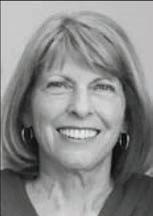
Earning the trust of trial lawyers and their clients for over 20 years.
Offering customized litigation solutions using top-tier funding products, including structured settlement annuities, to preserve government benefits, defer taxable income to allow offsetting deductions, and fund Special Needs, Minor’s, Spendthrift, and Plaintiff Recovery Trusts as well as structured installment sales for deferral of Capital Gains tax on Business and Real Estate transactions. Your trusted Settlement Planning Specialist with extensive background in litigation and financial services, for all types of legal proceedings.


people could have, again including Simpson. The fifth blood drop showed markers carried by only one out of every 170,000,000 people, the equivalent of only 41 people on earth, including Simpson. The blood drop on the rear gate at Bundy was most definitive, with markers that only one out of 57 billion had, only one person on earth, and that one was Simpson. A test on blood found on two black socks in O.J.’s bedroom tested positive for Nicole’s blood, with odds of one out of 6 billion having the same blood markers. This long and technical testimony, difficult for even lawyers to follow, occupied nearly twelve weeks of trial.
But in the midst of this testimony came what many saw as the turning point in the trial, the prosecution instruction to Simpson to try on the bloody gloves. They were unusual and uncommon gloves, with only a few hundred made, and there was both evidence of Simpson’s purchase of identical gloves and photos of him wearing them. There was no doubt that Simpson owned these gloves, or ones exactly like them. Yet still it was a reckless miscalculation by a prosecution so convinced of Simpson’s guilt that they chanced a demonstration without knowing with certainty that the gloves would fit.
It was a disaster. To all appearances struggling to pull the battered gloves on over latex under-gloves, Simpson said loud enough for the jurors to hear, “They don’t fit.” The latex gloves may have inhibited the fit, or the leather gloves may have shrunk from wetness, exposure or non-use, but it was a setback from which the prosecution never recovered.
On July 10th, Simpson’s lawyers began their defense in chief. They had scored numerous small victories in their cross-examination of the prosecution’s witnesses. Now they went on the offensive. Their argument was two-fold; first, that the blood evidence was collected and tested in such a way that it was corrupted and thus unreliable; and second, that Simpson was framed by the investigating officers, primarily Mark Fuhrman and Phillip Vannatter, whom the defense contended: (1) had dripped Simpson’s uncorrupted blood on the back gate of the crime scene, his driveway, and his home; and (2) had intentionally removed a bloody glove from the Bundy crime scene and planted it behind Kaelin’s guesthouse.
They began with an attack on the reliability of police testing procedures. The evidence was so complicated that defense attorney and Harvard law professor Alan Dershowitz, arguably one of the smartest lawyers of his generation, later wrote that much of the evidence was incomprehensible to him.4 In
the face of that complexity, the prosecution failed to point out, and the jury obviously failed to comprehend, that while degradation of blood evidence might cause analysis to fail to identify a defendant or a victim, no amount of degradation or mishandling could cause numerous samples to all point to Simpson.
The arguments for a police frame-up were based on circumstantial evidence but played well to the minority jury. The defense questioned the warrantless invasion of Simpson’s Rockingham residence early that following morning---challenging Vannatter’s testimony that he went simply to notify Simpson of the death of his ex-wife, that it took four detectives to do so, and that they only entered the property without a warrant
when they became fearful that other victims might be inside. With Simpson in Chicago, the defense argued, a racist Mark Fuhrman took the opportunity to plant the bloody glove that he had allegedly brought from Bundy Drive.
The defense next discredited the police department’s chain of possession of the reference blood drawn from Simpson at Parker Center the day after the murder. Nurse Thano Peratis initially testified that he had collected 8 cc of blood from Simpson. Phillip Vannatter admitted to taking possession of the vial of blood to turn it over to criminologist Fung, then at the Rockingham residence, rather than immediately checking it into the evidence room at Parker Center. When evidence was presented that there was only 6.5 cc of blood

in the vial, the defense argued persuasively that Vannatter had no valid reason to have been walking around for three hours on the day after the murders with a vial of Simpson’s blood in his pocket. His credibility damaged by his implied untruthfulness in entering the Rockingham estate without a warrant, it was only a short jump to the accusation that Vannatter had sprinkled the missing blood at Simpson’s residence.
But the most electrifying testimony came from detective Mark Fuhrman. Questioned by F. Lee Bailey whether he had ever used the “N word” in the past ten years, he responded that he had not. Yet in the defense’s possession were thirteen hours of taped interviews that Detective Fuhrman had given to a professor
experience, combined with our personable and


Only time will tell whether the O.J. Simpson trial was a great case that made bad law, or merely another media event that brought fleeting fame to all who participated in it.

and aspiring screen writer from North Carolina, Laura Hart McKinney. In those tapes, recorded between 1985 and 1994, he used the epithet some forty times, along with racially tinged statements against Black people, Jewish people, and other minority groups.
With the jury absent on September 6, 1995, Fuhrman was asked by defense attorney Gerald Uelmen whether he had ever falsified a police report, planted or manufactured evidence in the Simpson case, and whether his testimony given at the preliminary hearing was completely truthful. To each question, Fuhrman asserted his 5th Amendment privilege not to incriminate himself. When the testimony ended, Simpson sat at the defense table, his face buried in his hands and crying.5
Simpson never testified in his own defense.
Final summation by both sides occupied four days in the last week of September 1995. Prosecutors Clark and Darden were nearly apologetic in tone. “Nobody,” Darden told the jury, “wants to do anything to this man.” They were uncentered, almost fatalistic. They made no attempt to explain, defend, or rehabilitate Fuhrman, and devoted little effort to pointing out the unlikelihood—or even the practical absurdity—of an entire police department impulsively conspiring to frame an innocent man.
By contrast, the defense came out swinging. Recognizing the weakness and complexity of their blood arguments, they devoted almost all of their energy to convincing the jury that Simpson had been framed for the murders by racist white officers. On September 29, they finally addressed the bloody glove. Rising above the almost indisputable evidence that the gloves belonged to Simpson, Cochran locked eyes with the jury and told them, “If it doesn’t fit, you must acquit.”
The jury retired for deliberations shortly after 9:00 a.m. on October 2nd, but in only four hours they notified Judge Ito that they had reached a verdict. The court adjourned with instructions that the verdict would be read at 10:00 the following morning, October 3rd.
The entire country came to a halt to hear the verdict that morning. Ninety-one percent of all televisions in operation in America were turned to the coverage, only the first U.S. moon landing and the funeral of John F. Kennedy attracted a larger share of the audience. The LAPD went to full alert, arrayed against a repeat of the Rodney King riots. President Clinton was briefed on national security measures, then left the Oval Office to watch with staffers, one of an estimated 140,000,000 Americans tuned in. Larry King, host of CNN’s Larry King Live, told his viewers, “If we had God booked, and O.J. was available, we’d move God.”6
To the surprise of most of America, the jury found Simpson not guilty.
The mostly black jury, and most of Black America, saw the case as primarily about race. Even many who rejoiced at Simpson’s acquittal did not believe him to be innocent. But skin color can never be erased, never forgotten, and Johnnie Cochran knew that. Black himself, he preached to the jury. In his now famous sing-song cadence, he cited Cicero, Frederick Douglass, and the Bible. He was escorted to the courthouse by bodyguards supplied by the Nation of Islam, resplendent in their perfectly pressed dark suits and trademark bowties. He reportedly invited civil rights icon Rosa Parks to come sit in the courtroom and listen to closing arguments, but she refused. By positioning his client to a predominantly Black jury as a victim of framing by racist white policemen, he attained for Simpson a not-guilty verdict without the necessity of proving his innocence.
Vincent Bugliosi, the successful prosecutor of Charles Manson two decades earlier, was harshly critical of Garcetti, Clark, Darden, and the entire prosecution team. “The prosecution of O.J. Simpson was the most incompetent criminal prosecution I have ever seen. By far,” he wrote in his book Outrage: The Five Reasons Why O.J. Simpson Got Away with Murder, first published in June 1996.
Released after fifteen months in jail, Simpson and his lawyers and friends celebrated that night at Rockingham, Simpson holding a Bible.7 “When things have settled down a bit,” he said, “I will pursue as my primary goal in life the killer or killers who slaughtered Nicole and Mr. Goldman.” He gave interviews and released a mail order video declaring his innocence, but no one has ever seriously suggested another suspect in the double murder.
Miscellaneous civil, tax, and criminal problems continued to dog him, though, and he appeared in the news frequently in one scrape after another. After his acquittal, Simpson faced civil charges stemming from the murders. Trial was conducted in Santa Monica from October 1996 to February 1997, and Simpson was compelled to testify. The jury found Simpson liable for the wrongful deaths of Ron and Nicole and ordered him to pay $33,500,000 in damages. Little of that judgment was ever recovered. Finally, in September of 2007, Simpson led a group of armed men into a hotel room at the Palace Station Casino in Las Vegas to recover sports memorabilia allegedly stolen from him. Arrested two days later, he was charged with multiple felonies including conspiracy, kidnapping, assault, robbery, and the use of a deadly weapon. Three co-defendants accepted plea deals in return for their testimony, and Simpson and co-defendant Clarence Stewart were convicted on all charges. On December 5, 2008, Simpson was sentenced to thirtythree years in prison and incarcerated at the minimum-security correctional center in Lovelock, Nevada. He was released on October 1, 2017, having served almost nine years. He died in Las Vegas seven years later, aged 76.
As the publicity surrounding the trial faded, so did the public’s interest in the other players in the Simpson drama. Marcia Clark and Christopher Darden both left the district attorney’s office after the trial and published books on the experience. Los Angeles District Attorney Gil Garcetti survived the loss and was re-elected in 1996. His second term was consumed by the controversy surrounding allegations of extreme police misconduct in the City’s Rampart Division, including the alleged framing of suspects, and he lost his bid for a third term. His son Eric was elected mayor of Los Angeles in 2013.
Johnnie Cochran continued to handle high profile cases, and to make frequent appearances as a commentator on television. He is mentioned in numerous television shows, movies, and even a Broadway play, and
was famously parodied in several episodes of Seinfeld in the character of Jackie Chiles. At age 67, he died in 2005 from a brain tumor.
F. Lee Bailey, one of the most famous lawyers of the second half of the twentieth century, endured a tumultuous fall from grace. Ordered to turn over assets in another case, he was jailed for contempt for forty-four days in 2000 and eventually disbarred. He died in 2023 in Atlanta, Georgia.
Defense attorney Robert Shapiro also went on to other high-profile cases, and controversy. In widely publicized cases he sued former outfielder Daryl Strawberry for unpaid fees and was sued by record producer Phil Spector for the return of $1,000,000 in unearned fees. He co-founded LegalZoom. com, an online document preparation service for non-lawyers.
Simpson’s friend and lawyer Robert Kardashian, who sat at Simpson’s side throughout the trial, died of cancer in 2003 at the age of 59. After the acquittal, he expressed misgivings about the jury’s decision. “I have doubts,” he told Barbara Walters. “The blood evidence is the biggest thorn in my side; that causes me the greatest problems.”8 His children went on to fame as stars of the reality television show Keeping Up with the Kardashians
Tough-talking Philip Vannatter died of cancer of January of 2012. His partner, Tom Lange, retired from the LAPD shortly after the acquittal, wrote a book with Vannatter, and became involved in other entertainment projects. Ron Phillips stayed on with the LAPD for at least another decade before his retirement.
On July 5, 1996, the Los Angeles prosecutor’s office announced the filing of perjury charges against Mark Fuhrman. In October of that year, he accepted a plea deal and pleaded no contest, later stating that he neither had the funds to defend himself nor was likely to receive a fair trial. Sentenced to probation and fined $200, Fuhrman’s is the only conviction achieved following the brutal murders of Nicole Brown Simpson and Ron Goldman. Fuhrman retired from the LAPD, moved to Idaho, and has written extensively on the Simpson murders and other cases.
The media immediately understood that the Simpson case was ultimately about race. It is tempting to believe that, by 1995, a post–Civil Rights America had shrugged off its legacy of prejudice, but the reality is different. Most white Americans polled opine that the laws and institutions in America are color-blind, and this lets them rationalize the abolition of affirmative action
and a judicial system that incarcerates a disproportionate number of Black men. In their turn, Black Americans feel abandoned by the loss of preferences that only sought to make up for the centuries-old head start that white Americans enjoy. Those beliefs did not change with Simpson’s acquittal.
Defense counsel Allan Dershowitz is more nuanced. While not asserting Simpson’s innocence, he believes that the prosecution intentionally put on a case it knew to be partially false, in order to prove what it honestly believed to be Simpson’s guilt. Such conduct being improper under the law, he contends Simpson was properly acquitted.9 Dershowitz wrote:
Only time will tell whether the O.J. Simpson trial was a great case that made bad law, or merely another media event that brought fleeting fame to all who participated in it. One observation that will not be disputed is that it was a case for the 1990s, involving as it did the most controversial and divisive issues of this decade; spousal abuse, racial politics, economic inequalities, scientific innovations, criticism of lawyers, and instant communication.10

Mark J. Phillips is a shareholder at the law offices of Lewitt Hackman in Encino, California. Aryn Z. Phillips is an Assistant Professor at the University of Illinois. They are the co-authors of Trials of the Century (Prometheus, 2016), from which this article is excerpted.
1Vincent Bugliosi, Outrage: The Five Reasons Why O.J. Simpson Got Away with Murder (Norton & Company 1996), 37.
2Id. at 116.
3Darnell M. Hunt, O. J. Simpson: Facts & Fictions (Cambridge University Press, 1999), 87.
4Alan M. Dershowitz, Reasonable Doubts: The Criminal Justice System and the O.J. Simpson Case (Simon & Schuster, 1996), 197.
5Stephanie Simon, Henry Weinstein, & Andrea Ford, “Furman Invokes 5th Amendment, Refuses to Testify,” Los Angeles Times, September 7, 1995, available at https://www.latimes.com/archives/la-xpm-1995-0907-mn-43219-story.html.
6Bugliosi, Outrage, at 273.
7Id. at 24.
8Jacon Bernstein, “O.J. Simpson and the Kardashians,” New York Times, April 11, 2024, available at https:// www.nytimes.com/2024/04/11/style/oj-simpson-kardashians.html.
9Dershowitz, Reasonable Doubts at 98.
10Id. at 206.
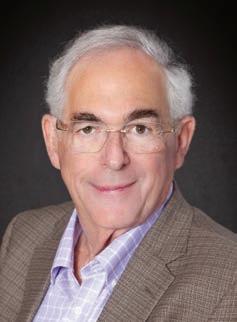

By The Honorable Stacy Sharp and Jordan Long

The new Texas Business Court is up and running. After operating in temporary office space for the first eight months, the staff of the Court’s Fourth Division moved into its bright and comfortable new chambers in May. Located on the fourth floor of One Alamo Center, the chambers are in downtown San Antonio, just down the street from the Bexar County Courthouse. While the Division is still awaiting the arrival of its permanent furniture, the transition to our permanent facilities was a welcome and exciting one. The hard-working staffers at Texas’s Office of Court Administration, headquartered in Austin, have poured much time and expertise into the chambers’ design and construction, along with overseeing the technological, personnel, and other procurementrelated needs involved in launching a brand-new court. Meanwhile, construction of the Division’s hearing room is underway, with the initial design phase having concluded and completion anticipated later this year. The hearing room adjoins the new chambers and will handle most of the Division’s nonjury matters for cases in which venue lies in Bexar County.
As the five Business Court divisions settle into their respective locations across the state, their cases are progressing. At the time of writing, the Court’s first trial is set for this September, and the Court has issued over thirty written opinions. Those opinions include several first-impression issues related to Business Court litigation:
The Business Court has begun articulating the pleading standards required to invoke or challenge its jurisdiction. The Court has resolved that Texas’s well-established plea-to-the-jurisdiction standard will apply in Business Court cases. C Ten 31 LLC v. Tarbox, 2025 Tex. Bus. 1, ¶ 46,
With over 150 cases filed, the Texas Business Court will continue to pursue its mission of adding stability and predictability to the Texas legal landscape by issuing written opinions that answer the procedural and substantive questions arising in this new commercial-litigation forum.
708 S.W.3d 223, 242 (3d Div. 2025); ET Gathering & Processing LLC v. Tellurian Prod. LLC, 2025 Tex. Bus. 11, ¶ 7, 709 S.W.3d 1, 4 (4th Div. 2025). In the removal context, when the removing party pleads that the value of the rights at stake are within the court’s jurisdiction and the petition does not plead otherwise, the party moving for remand bears the initial burden to show the amount pleaded is a sham, or that a different amount is readily established. C Ten, 708 S.W.3d at 243. In C Ten, Austin’s Third Division rejected the argument that a removing party must attach evidence of the amount in controversy to prevent remand. Id. at 239. And in ET Gathering, the Fourth Division’s Judge Marialyn Barnard denied a plea to the jurisdiction where the petition adequately asserted that the amount in controversy exceeded ten million dollars, reasoning that the pleading should control. ET Gathering, 709 S.W.3d at 5. The party’s petition amendment adding new facts to invoke the Business Court’s jurisdiction did not indicate the amount pleaded was a “sham.” Id. at 4-5.

Governor Greg Abbott administers the oath of office to the Business Court judges at a ceremonial investiture in Fort Worth on September 19, 2024.
The Court can hear actions “arising out of a qualified transaction” worth ten million dollars or more. Tex. Gov’t Code § 25A.004(d)(1). In an action involving promissory note assignments, the First Division in Dallas sua sponte addressed its jurisdiction under this clause, concluding that “arising out of” denotes a broad causal relationship akin to but-for causation. Atlas IDF, LP v. NexPoint Real Est. Partners, LLC, 2025 Tex. Bus. 16, ¶ 29, 2025 WL 1381574, at *3 (1st Div. 2025). The Court resolved it could exercise jurisdiction in Atlas, reasoning that even where the promissory notes were not initially valued at ten million dollars, the parties in that case may have placed a higher value on the transaction, reasonably expecting the amount of interest to grow before payment was demanded. Id. at ¶ 36.
This broad statutory construction was followed by an opinion issued in May, which limited the definition of qualified transactions. The Court’s Eighth Division ruled that prospective transactions are not “qualified” ones for purposes of the statute conferring jurisdiction. G-Force & Assocs., Inc. v. Bloecher, 2025 Tex. Bus. 18, 2025 WL 1397069 (8th Div. 2025). While no payment need yet have changed hands, a transaction does not satisfy the jurisdictional definition unless the parties were at least bound to perform their mutual obligations. Id. at ¶ 18.
Upon reading the Business Court’s enabling legislation, many in the legal community initially assumed the clause granting jurisdiction over actions seeking injunctions or declaratory judgments would apply to any suit requesting such equitable relief. However, the Third Division has now disavowed that notion, holding the statutory grant of jurisdiction for
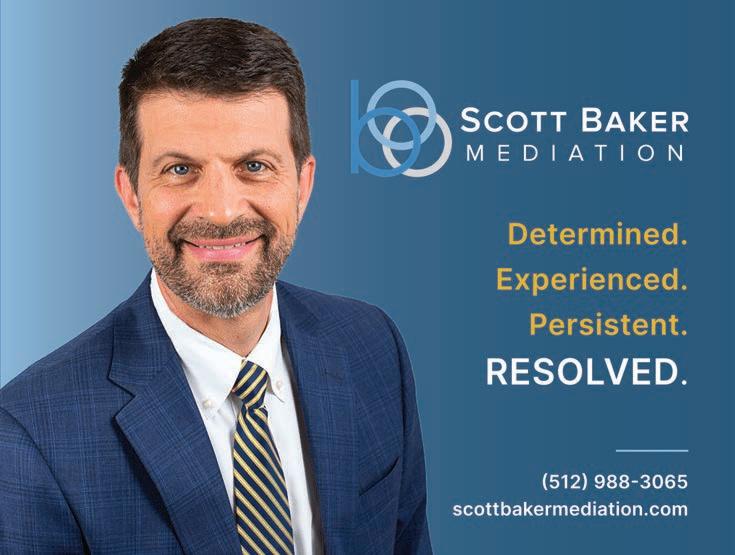
suits seeking equitable relief incorporates the applicable monetary-threshold requirements.
C Ten, 708 S.W.3d at 231. The amount in controversy in such actions is measured by the value of the rights at issue. Id. at 233.
Roughly half of the Business Court’s cases involve a business entity’s internal-affairs dispute. Not surprisingly, then, these suits often allege fiduciary breaches by a company’s governing officers, members, or directors. In March, the Court clarified the scope of those duties in the context of a partnership agreement that required partners to act in good faith but disclaimed any fiduciary duties. Primexx Energy Opportunity Fund, LP v. Primexx Energy Corp., 2025 Tex. Bus. 9, ¶ 96, 709 S.W.3d 619, 642 (1st Div. 2025). What duties remained, the Court concluded, included a limited duty of candor, but no discrete duty to act in the best interest of the partnership. Id. at 646, 654.
The next month, the Court analyzed a related question in the Rule 91 context.
The Eighth Division strictly adhered to the plain language of the company’s operating agreement, declining to find any informal fiduciary duty between co-members of an LLC and finding the fiduciary breach claim “legally baseless.” See Tall v. Vanderhoef, 2025 Tex. Bus. 15, 2025 WL 1165208 (8th Div. 2025) (mem. op.).
Meanwhile, the Governor signed Senate Bill 29 into law in May. Among other changes, the new bill codifies the business-judgment rule and creates a rebuttable presumption that corporate directors act in good faith. Tex. S.B. 29, § 11. 89th Leg., R.S. (2025).
The creation of a new court naturally triggers new questions in Texas civil procedure. In February, the First Division in Dallas was faced with the novel procedural question of whether an appearance in a state district court would be deemed a general appearance for purposes of consenting to personal jurisdiction in a Business Court suit. Primexx Energy Opportunity Fund, LP v. Primexx Energy Corp.,
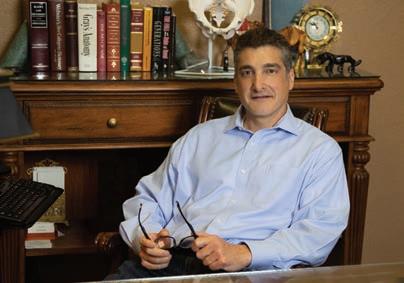
2025 Tex. Bus. 5, 2025 WL 446345 (1st Div.). The Court ruled it was.
The same month, Austin’s Third Division weighed in on a removal-procedure issue, declining to adopt a party’s argument that the statutory thirty-day removal deadline can run before a lawsuit is filed—regardless of when a party discovered facts that would grant the court jurisdiction over a future, potential lawsuit. Safelease Ins. Servs. LLC v. Storable, Inc., 2025 Tex. Bus. 6, 707 S.W.3d 130 (3d Div. 2025).
A few months later, the Eleventh Division faced the question of whether the Business Court statute, which allows venue to be established by a written contract, overrode the doctrine enforcing venue selection clauses only where the contract is a “major transaction” stating a value of $1 million. NGL Water Sols. Permian, LLC v. Lime Rock Res. V-A, L.P., 2025 Tex. Bus. 20, 2025 WL 1445867 (11th Div.) (mem. op.). The court answered the question in the negative. Id. Absent a major transaction, the real property mandatory venue controlled, requiring dismissal for lack of venue. Id.
With over 150 cases filed, the Texas Business Court will continue to pursue its mission of adding stability and predictability to the Texas legal landscape by issuing written opinions that answer the procedural and substantive questions arising in this new commercial-litigation forum.

The Honorable Stacy Sharp has served on the Business Court of Texas, Fourth Division since her appointment on September 1, 2024. She joined the bench following years of private practice in trial and appellate litigation and has served on the faculty for University of Texas Law School since 2010.

Jordan Long is a staff attorney for Judge Stacy Sharp. Prior to joining the Business Court, Jordan clerked for the Hon. Jeffrey V. Brown on the U.S. District Court for the Southern District of Texas and was an associate at Norton Rose Fulbright.
This year, the State Bar of Texas awarded two of its four Stars of Texas Bars awards to the following outstanding series published in San Antonio Lawyer:
Linda Brandmiller & Esmeralda Sosa Serratos, Understanding Immigration, Part I: Ten Immigration Facts Every Lawyer Needs to Know, San Antonio Lawyer, November–December 2024, pages 14–16.
Linda Brandmiller & Esmeralda Sosa Serratos, Understanding Immigration, Part II: Humanitarian Relief for Immigrants, San Antonio Lawyer, January–February 2025, pages 13–18.
Rehan Alimohammad & Matthew Myers, Understanding Immigration, Part III: Employment-Based Immigration, San Antonio Lawyer, March–April 2025, pages 19–24.
ileta! A. Sumner, HipHop: How a “Niche Movement” Influenced the Law and Changed the World, Part 1: Origins and Development, San Antonio Lawyer, Nov–Dec 2024, pages 17–20
ileta! A. Sumner, HipHop: How a “Niche Movement” Influenced the Law and Changed the World, Part 2: Some Copyright Issues, San Antonio Lawyer, Jan–Feb 2025, pages 19–22.
ileta! A. Sumner, HipHop: How a “Niche Movement” Influenced the Law and Changed the World, Part 3: Additional Legal Issues and How Hip-Hop Influenced the Nation and the World, San Antonio Lawyer, Mar–Apr 2025, pages 25–29.


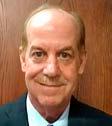
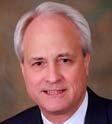
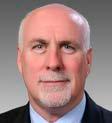
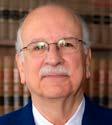
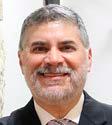

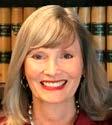



methodofmanipulatingmusic;“rapping,”usingspokenwordinsteadof singing,butstillusinglyricismtomakeone’spoint;“breaking,”
mannerofmovementthatseemedtodefythelawsofphysics
bedisplayedingalleries.Afifthelementhasultimatelybeenrecognized asbeinganintrinsicpartofhip-hop:“knowledge,”understandingthat thewordsbeingsaidareimparting
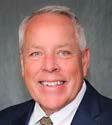
thelistenercanunderstandtheimportanceofthespeaker’spoint
beingcreated.Becausethepreviousworksofotherartistswerebeing
KoolHerchaddeveloped mannerofextendingthepartofthesongwherethevocalswoulddropandthebandwouldjam,known “the break,”usingtwoturntablestoextendthatportionofthesongoverand over.Becausethiswasthemostexcitingpartofthesong, waseasy togetthecrowdhypedandgetthemdancing.Inordertoextendthis sectionevenlonger,DJsmanipulatedthevinylrecords,using rhythmic effecttoskidthediskbackandforthandproducea“scratching”sound
thecrowdwild. WhatKoolHercwasdoingwas“DJ-ing”;thepeoplewhowould usuallydothehypingwould the“MasterofCeremonies”orthe “MC.”Hence,theMCwouldmake poem(usuallyonthefly)that wouldbespokenoverthebreakscreated theDJs,usingvocaltones, inflection,dialect,notunlikethepractitionersof“spokenword”art;
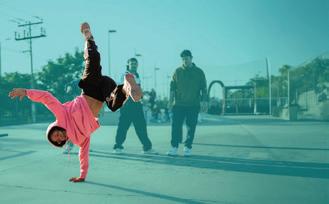
Byileta!A.Sumner
mostcompellingargumentforself-governanceofanytypeofcontent warning,whenhishit“RockyMountainHigh”hadbeenmisconstrued
“Bannedphysicalreleases.By1990—whenthefirstalbumtocarrythelabel intheUSA”bythehip-hopgroup2LiveCrewwasreleased— Likethelabelhadbeenrevisedtoread“ParentalAdvisory:ExplicitLyrics.” LiveCrew,everyhip-hopactthatindulgedinlanguagedecided tobeprofane—anintrinsicpartofthemajorityof“gangstarap”albums, Southgenrethatproliferatedthemusicfromperformersinitiallyfromthe CentralLosAngeles/Comptonareas
ontohavethislabelemblazonedontheirworkorhavethelyricsaccessible thethebackoftherecordorCD.Eventually,thelabeltransitionedinto

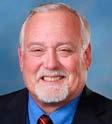

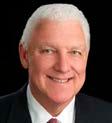

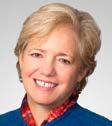
By Justice Irene Rios
We recently held the trial court did not abuse its discretion when it awarded attorney’s fees in an insured’s suit seeking entitlement to underinsured motorist (“UIM”) benefits under the Uniform Declaratory Judgments Act (“UDJA”). See State Farm Mut. Auto. Ins. Co. v. Valdez, 690 S.W.3d 712 (Tex. App.–San Antonio 2024, pet. denied). Pursuant to the supreme court’s holding in Allstate Ins. Co. v. Irwin, an insured may obtain the judgment necessary under the UDJA to establish the insured’s entitlement to UIM benefits. 627 S.W.3d 263, 270 (Tex. 2021). Under the UDJA, a prevailing party is entitled to recover reasonable and necessary attorney’s fees. See Tex. Civ. Prac. & Rem. Code Ann. § 37.009. However, Valdez was unique because the insurer, State Farm Mutual Auto Insurance Company (“State Farm”), did not contend the attorney’s fees requested by the insured, Ernest Valdez, were unreasonable, inequitable, or unjust. Instead, State Farm argued the attorney’s fees were not necessary because its pre-suit settlement offer exceeded the amount the jury ultimately found Valdez was entitled to recover under his UIM policy. Following a vehicular accident, Valdez settled with the defendant driver for the policy limits of $100,001 and then sought compensation from State Farm pursuant to his personal injury protection (“PIP”) and UIM benefits. State Farm paid Valdez $2,500 in PIP benefits and offered to settle Valdez’s UIM claim for $5,135. Valdez declined the offer and
sued State Farm seeking a declaration that he was entitled to recover damages under his UIM policy because he alleged his damages exceeded what he recovered from the defendant driver’s policy limits and his own PIP benefits. See Tex. Civ. Prac. & Rem. Code Ann. §37.004; see also Irwin, 627 S.W.3d at 270 (holding an insured may sue its insurance carrier under the UDJA to determine the parties’ status and responsibilities under a UIM policy prior to its breach). Valdez also sought recovery of court costs and attorney’s fees. See Tex. Civ. Prac. & Rem. Code Ann. §37.009 (providing under the UDJA “the court may award costs and reasonable and necessary attorney’s fees as are equitable and just”).
The jury determined Valdez incurred $103,324 in damages from the accident. After applying offsets for the $100,001 settlement and the $2,500 PIP benefits State Farm already paid, State Farm remained liable to Valdez for $823 under the UIM policy. The trial court determined Valdez was entitled to recover attorney’s fees and court costs and awarded Valdez $20,000 in attorney’s fees and $3,854.94 in court costs. On appeal, State Farm pointed out that its $5,135 pre-suit settlement offer exceeded Valdez’s $823 entitlement under the UIM policy. Because the pre-suit settlement offer was greater than Valdez’s entitlement under his UIM policy, State Farm contended Valdez’s entire suit was unnecessary. Therefore, State Farm argued, the attorney’s fees incurred by Valdez pursuing his UDJA claim were likewise unnecessary. We disagreed.
In Irwin, the Texas Supreme Court made clear that an insurance carrier is under no legal obligation to pay UIM benefits until the insured obtains a judgment establishing the liability and underinsured status of the other motorist. See Irwin, 627 S.W.3d at 267 (citing Brainard v. Trinity Universal Ins. Co., 216 S.W.3d 809, 818 (Tex. 2006)). “The insured is not required to litigate these issues against the third-party tortfeasor[] but may instead settle the tort claim and litigate UIM coverage with the insurer.” Irwin, 627 S.W.3d at 267. Thus, under Irwin, Valdez was required to first obtain a judgment establishing the defendant driver’s liability and status as an underinsured motorist before State Farm would be legally obligated to pay Valdez UIM benefits. In line with Irwin, State Farm stipulated during the underlying litigation that it intended to pay the UIM benefits “if [Valdez] shows through a judicial determination that he is legally entitled to recover from [the defendant driver] if [the defendant driver’s] insurance limit of liability is not enough to pay the full amount [Valdez] is entitled to recover as damages . . . .” Valdez, 690 S.W.3d at 715. Because Valdez was required to obtain a judgment establishing his entitlement to UIM benefits under the supreme court’s holding in Irwin—and pursuant to State Farm’s stipulation filed with the court—we held it was necessary for Valdez to pursue his UIM claim under the UDJA and concluded the trial court did not abuse its discretion when it awarded Valdez recovery of his reasonable and necessary attorney’s fees.

Justice Irene Rios has served on the Fourth Court of Appeals since January 2017. Justice Rios previously served as Judge of County Court at Law No. 10, in Bexar County, for fourteen years. Prior to her appointment to the bench, Justice Rios spent nine years in private practice. She is a Fellow of the Texas Bar Foundation and a Fellow of the San Antonio Bar
and has served as a Special Master of


107+ Ac. KERR Cnty. - Minutes to Kerrville. End-of-road privacy. 3/3 Main house, 1/1 Guest casita, heated pool, nice barn underground electric, full alarm system, three septic tanks, electric well with storage tank. Abundant trees, crystal-clear, rock-bottom live water creek, authentic indian mounds, wildlife exempt status. This property is unsubdivided, unbothered, and undeniably rare! No HOA. No noise complaints. No stress.

Texas Best Guadalupe River! One of a Kind!
8+ Ac. Comal Cnty. - Minutes to Spring Branch. Approximately 450± ft of river front. Private/quiet, giant oak/cypress trees, water well and electric, nice coastal field. Agricultural taxes.

Texas Best New Braunfels! Both Sides of Creek, Spring!
178+ Ac. Comal Cnty. - 3BR/3BA main house, 2500+ s.f. 2nd home/office, workshop/equipment barn, outdoor cooking and entertaining area, ranch road system, Wildlife taxes.
By Soledad Valenciano, Sabrina Salazar, and Clarissa Valenciano
If you are aware of a Western District of Texas order that you believe would be of interest to the local bar and should be summarized in this column, please contact Soledad Valenciano (svalenciano@svtxlaw.com, 210-787-4654) with the style and cause number of the case, and the entry date and docket number of the order.
Due Process; Targeting Order; TRO
Texas Ass’n of Money Services Businesses (TAMSB), et. al v. Pam Bondi, et. al ., No. SA-25-CA-00344-FB (Biery, F., May 19, 2025)
Money exchange services companies sought relief from Geographic Targeting Order 14157 (GTO 14157), aimed at combatting the illicit activities and money laundering of Mexico-based cartels, drug traffickers, and other criminal actors along the Southwest U.S. border. The GTO requires all money services businesses located in thirty U.S. zip codes along the southwest border in California and Texas to file Currency Transaction Reports (CTRs) with FinCEN in connection with cash transactions valued at more than $200, reducing the historic threshold for money exchanges and transfers from $10,000 to $200. As a result, the plaintiffs would be required to process tens of thousands of CTRs instead of the relative handful previously needed. The Court found that, likely, GTO 14157 (a) is unreasonable; (b) overreaches; (c) is arbitrary and capricious; and (d) under the correct legal standard, violates the Fourth Amendment. The court also found GTO 14157 likely violates the Administrative Procedures Act by not allowing notice and comment. The full forty-page opinion can be found on the court’s website at www.txwd.uscourt.gov under the “Notable Cases” tab.
Robinson v. Penske Truck Leasing Company, et. al, SA-24-CV-00118-JKP (Chestney, E., March 7, 2025)
The court denied the defendant’s motion to bifurcate. The decision to bifurcate a trial is up to the discretion of the trial court and not section 72.052 of the Texas Civil Practice & Remedies Code—a Texas procedural rule that does not apply in federal court. The court indicated this is an issue that should be decided closer to trial, most likely at the final pretrial conference. The court denied the plaintiff’s motion to defer consideration of the defendant’s motion for summary judgment. Rule 56(d) allows a court to defer consideration of a motion and allow additional time for discovery where a moving party shows “it cannot present facts essential to justify its opposition” if the moving party sets forth “a plausible basis for believing that specified facts, susceptible of collection within a reasonable time frame, probably exist and indicate how the emergent facts, if adduced, will influence the outcome of the pending summary judgment motion.”
The plaintiff’s counsel’s affidavit was “devoid of any support for his contention that additional discovery will influence the disposition of the summary judgment motion.” Although given the opportunity at two hearings and in his briefing, the plaintiff’s counsel failed to provide the court with sufficient information as to why the plaintiff cannot yet respond to the motion and failed to explain with specificity how the discovery he was seeking would affect the basis of the defendant’s summary judgment motion.
FCCI Insurance Company, vs. VERITAS Management Company, LLC , et al. , SA-24-CV-00743-ESC (Cheney, E., March 7, 2025)
The court ordered the defendant LLC to secure representation by any attorney by a date certain to prevent default from being entered, as LLCs are not permitted to represent themselves pro se in federal court. The court simultaneously ordered the pro se answer of the LLC to be stricken. The LCC responded that it was unable to find counsel due to it being an insolvent company with no financial resources with which to hire an attorney and asked the court to appoint counsel. The court denied the motion and directed the clerk to enter default against the LLC. There is no absolute right to an attorney in a civil case, and a court is only required to appoint counsel for an indigent party in a civil lawsuit if “there exist exceptional circumstances warranting such an appointment.” Further, the statute that allows for the appointment of counsel for indigent litigants only references persons, not entities.
McGarity v. O’Malley, No. SA-23-CV863-OLG (HJB), (Bemporad, H., May 31, 2024); adopted by McGarity v. O’Malley, No. SA-23-CV-00863-OLG, (Garcia, O., July 23, 2024)
The plaintiff brought this lawsuit against the commissioner of the Social Security
Administration (“SSA”), on behalf of a minor, seeking judicial review of the denial of supplemental security income (“SSI”). The plaintiff filed an application for SSI, which was denied by an administrative law judge based on a finding of no disability. The plaintiff requested review of the denial by the SSA’s Appeals Council. On March 27, 2023, the Appeals Council notified the plaintiff that her request for review was denied, that her only remaining recourse was to file a civil action, and that she had 60 days from her receipt of the notice to do so. The notice indicated that absent a showing to the contrary, the plaintiff would be presumed to have received notice five days from the date on which the notice was sent. The plaintiff’s counsel requested an additional 60 days to file suit. The Appeals Council granted the plaintiff an additional 30 days, making the new deadline to file a civil action June 27, 2023. The plaintiff filed suit on July 12, 2023, after the Council’s extended deadline. The Commissioner filed a motion to dismiss, alleging that the plaintiff’s claim was time-barred. The court converted the motion to a motion for summary judgment, as it relied on facts outside of the pleadings. The court granted summary judgment in favor of the Commissioner.
Subject matter jurisdiction; diversity jurisdiction; amount in controversy; Rule 12(h)(3) dismissal; breach of contract Nealy v. Cnac, No. SA-24-CV-273-JKP (HJB), (Bemporad, H., May 31, 2024); adopted by Nealy v. Cnac, No. SA-24-CV273-JKP, (Pulliam, J., July 16, 2024).
A pro se plaintiff filed this breach of contract claim arising out of a consumer credit transaction involving the purchase of a vehicle, citing to Chapter 38 of the Texas Civil Practice and Remedies Code, and seeking either performance of the contract or restitution in the amount of $125,000. The court’s jurisdiction to hear state law breach of contract claims is limited to those in which the parties are diverse and the amount
in controversy exceeds $75,000. However, the plaintiff failed to allege diversity, and despite the plaintiff’s $125,000 restitution claim, both the complaint and the contract in question evidenced a $27,378.32 transaction, falling far short of the $75,000 amount-in-controversy requirement. The court noted that because the plaintiff was pro se, he was entitled to amend his complaint so as to bring it within the court’s jurisdiction. However, as amended, the complaint merely changed (1) the restitution claim to $80,000, and (2) the law under which his claim arose to the Federal Reserve Act, without factual support or further explanation as to how the law applies. As in the original, the amended complaint failed to allege diversity of citizenship. As such, the complaint was dismissed for lack of jurisdiction.



Soledad Valenciano practices commercial and real estate litigation with Spivey Valenciano, PLLC.
Sabrina Salazar practices commercial litigation with Dykema Gossett PLLC.
Clarissa Valenciano, a 3L student at Texas Tech University School of Law, is temporarily helping her mother, Soledad Valenciano, author the Federal Court Update.


Get a head start on your legal drafting with the speed of AI and finish stronger with verifiable legal content. Lexis+ AI® accelerates your workflow, ensuring you deliver top-quality full documents every time.
“ Lexis+ AI has fundamentally transformed our legal research and drafting workflows. The drafting tools, particularly for motions and briefs, have significantly reduced the time we spend on initial drafts, allowing us to focus more on strategic analysis. ”


When legal matters involve financial complexity, theKFORDgroup delivers clarity. Our forensic accounting experience helps attorneys uncover fraud, resolve disputes, and quantify damages with confidence.
Discover how financial facts can strengthen your case.
Schedule a consultation today.




